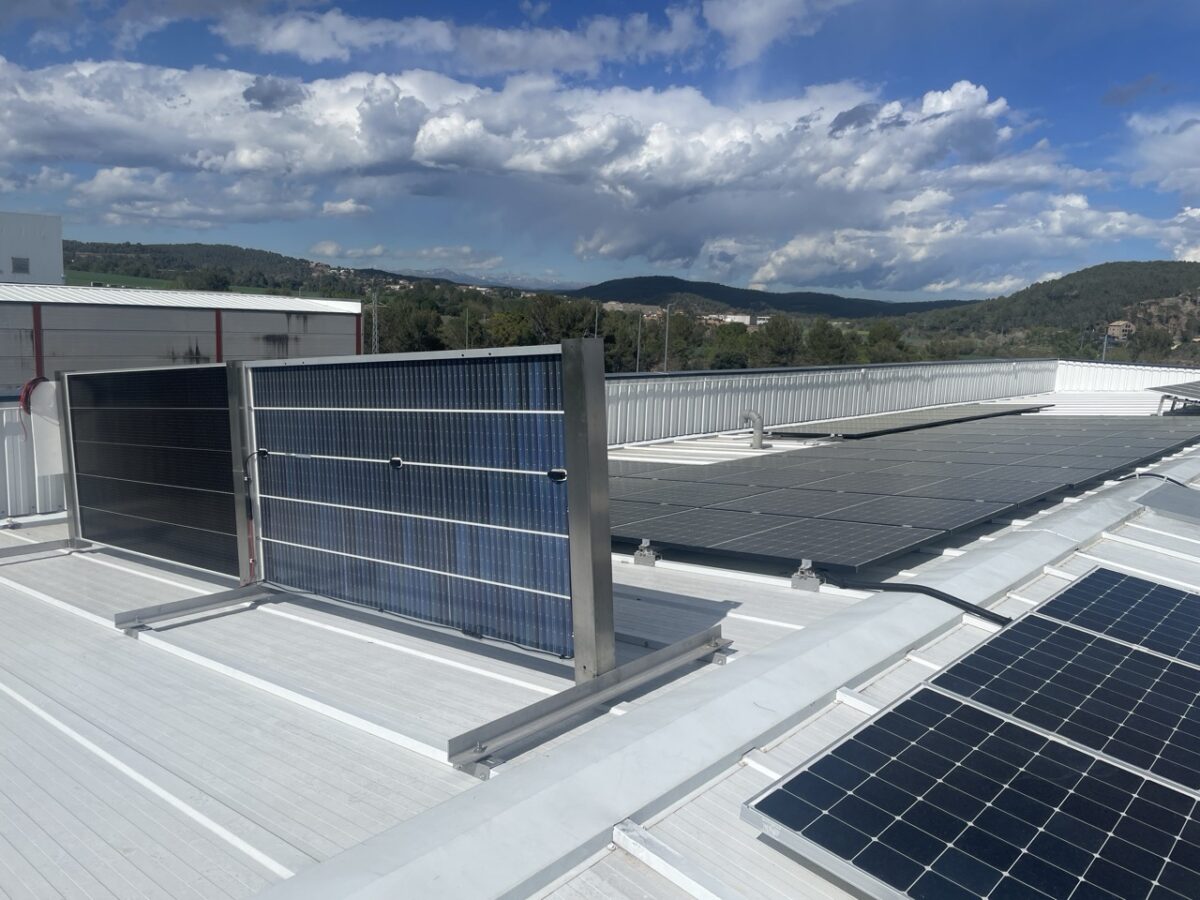From pv magazine Spain
Spanish rooftop PV installer SUD Renovables has deployed vertical bifacial solar panels on the rooftop of its warehouse in Avinyó, Barcelona, Spain. The system features two 500 W P6 panels from US-based SunPower and two IQ8P microinverters from Enphase Energy.
“The mounting structures have been designed according to the wind characteristics of the area, with stainless steel material,” Sud Renovables Managing Partner Manel Romero told pv magazine.
The company deployed one of the panels with its front side face facing east, and the other facing west. Each one works independently, with maximum power point tracking (MPPT).
“With this configuration, we will experimentally see the behavior of the panel and the generation curve, which will be double if we consider the morning and afternoon peak, and the real value of specific production of the system,” explained Romero.
Sud Renovables acknowledged that it does not seem to make much sense to put vertical panels on a rooftop in low latitudes, but it plans to test them to validate their performance. It said it will consider vertical architectures in projects for which this configuration is appropriate, such as agrivoltaic systems, arrays on acoustic barriers along highways, fencing, or building facades.
“In Spain, it would make a lot of sense to install bifacial panels vertically on the ground and in urban environments with vertical applications,” said Romero.
He said that in these systems, the panel should be installed along the frame, without any objects casting shadows on the back, including metal profiles, wiring trays, microinverters, or optimizers.
Popular content
However, the vertical placement of panels can expose modules to wind, which is why it is important that they are installed with the appropriate structures. This guarantees that the panels can withstand wind loads, so micro-ruptures of cells do not cause hotspots. SUD Renovables also suggested avoiding larger panels, and to use solar panels measuring approximately 2 square meters.
“The performance, or specific production, of the vertical panels is lower than with lower inclinations, but the drop in the price of the panels means that considering their installation vertically makes more sense today in specific applications, where conventional installation is not possible or is more complex,” added Romero.
The generation curve of the installation no longer has a peak at noon, but instead has two well-marked peaks – one in the morning and another in the afternoon.
“Instead of comparing their production with that of inclined systems, it would be more appropriate to compare them with alternatives that can produce in the same time range, or that include storage,” he stated.
The company said that these facilities have several main advantages over conventional south-facing arrays. First, the panels work at their maximum power in the morning and in the afternoon, when the temperature is not so high, and the modules dissipate heat more effectively, so temperature losses are much lower.
Vertical panels also stay cleaner than horizontal panels with an inclination, reducing performance losses due to dirt, minimizing cleaning costs, and lowering the risk of hotspots. In self-consumption mode, it might also be better to have the curve with the two peaks in the morning and afternoon, instead of the midday peak, which usually generates more surpluses.
“According to current electricity prices, it will be better to save electricity in the morning and afternoon peaks, which have higher electricity prices,” said Romero.
This content is protected by copyright and may not be reused. If you want to cooperate with us and would like to reuse some of our content, please contact: editors@pv-magazine.com.



Why would anyone write an article that a test had been done, buy not include the results of the test? 🤔